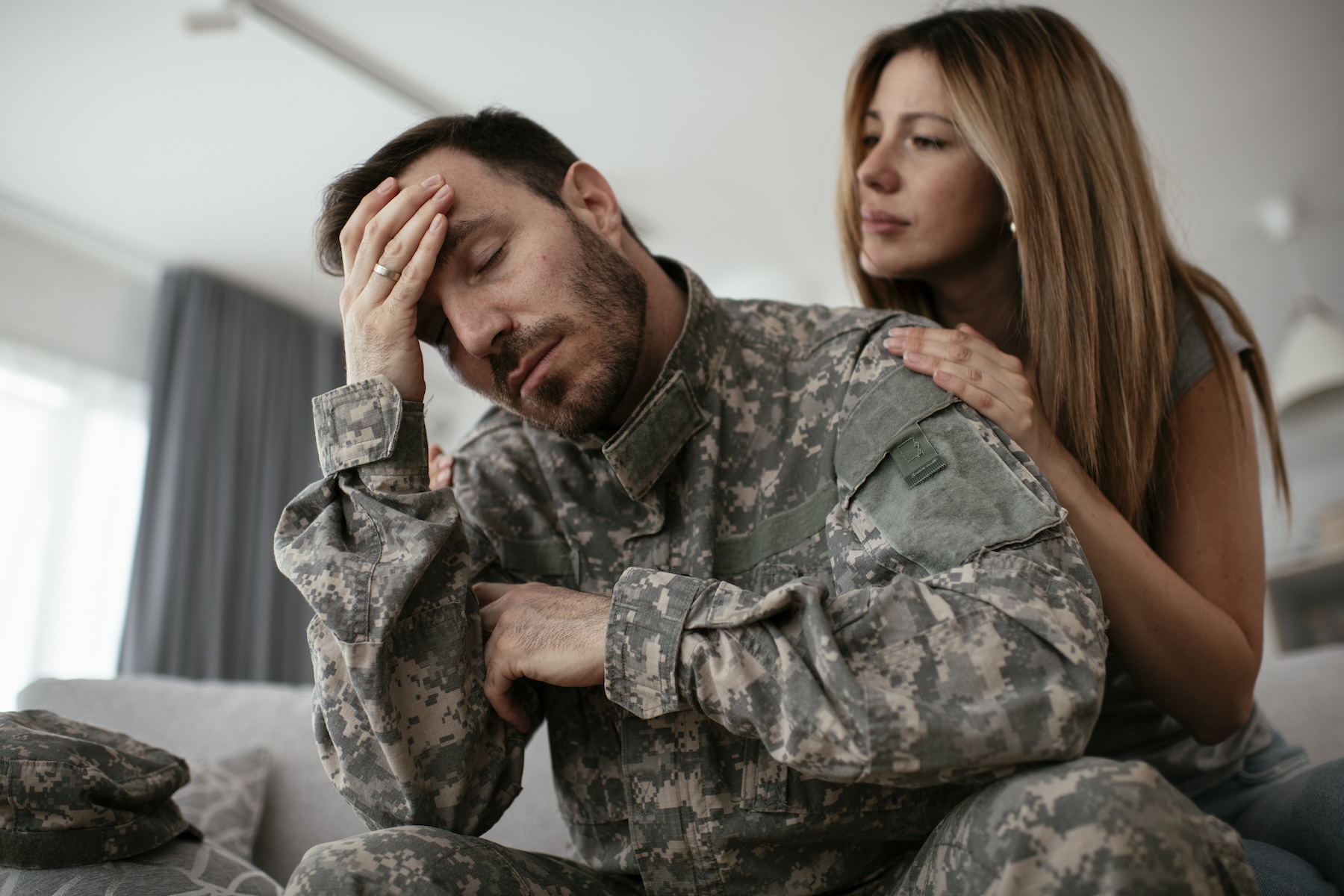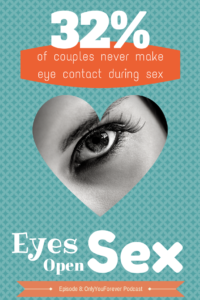
How to Tell If You Have PTSD – The Signs You Need to Watch For
Have you ever felt constantly on edge? Like no matter how much you try to relax, your body just won’t let you? Maybe you struggle with sleep, feel disconnected from others as you go through daily life, or find yourself reacting to situations in a way that surprises you.
It’s just kind of not you. And the worst part is, you don’t really know why.
Today we’re breaking down what PTSD looks like. We’ll discuss how it can show up in your daily life and the twelve leading signs that you may be living with unresolved trauma. We’ll explore why these patterns develop, how they affect your relationships and daily experiences, and what steps you can take to start making sense of it all.
To make this as helpful as possible, we will pull from our experience as therapists who work with trauma survivors. We’ll also refer to the book “The Body Keeps Score,” by trauma expert Dr. Bessel van der Kolk.
Whether you’ve been through a major life event or a series of smaller things that have stacked up on you, if you feel like something isn’t quite right, this post could give you the clarity that you’ve been searching for around PTSD and whether that describes what you have been experiencing.
Dr. van der Kolk outlines twelve leading symptoms of complex PTSD. We’re going to break these down for you here.
1. Hypervigilance
The first leading symptom of PTSD is a constant feeling of unsafety and hypervigilance. Dr. van der Kolk says that patients with PTSD are always on guard. Their bodies are chronically tense and defensive as if they’re still in danger now. We often see this play out in our therapy sessions.
When people come in for counseling, they don’t necessarily use the word “hypervigilance.” Instead, they tend to say things like, “I’m very aware of everything that’s happening around me.” They say they feel like they’re “always on watch,” they’re “very aware of others and interactions,” and that they’re “always on guard.” They may also say that they “feel super awake, all the time.”
Hypervigilance after betrayal: As therapists, we do a lot of work with survivors of betrayal – of infidelity or when your partner has an affair, for example. Our clients who have experienced this type of trauma often tell us that they always feel very aware of when their partner gets a text message. They’re keyed right in on that little text notification. If something’s a little bit off about how their partner is conducting themselves, or if their partner is two minutes late – things that would’ve never bothered them in the past – suddenly catch their attention. That’s hypervigilance.
One of the biggest things our clients have talked about is always tracking their spouse. If their spouse is out of the home, they need to know exactly where they are at all times. And it’s because they’re not feeling safe, so they have to try and make themselves feel safe in some way.
Hypervigilance after medical trauma: People can experience hypervigilance around medical traumas as well. Just the other day, we observed a parent whose child went through a major prolonged illness that involved immense hopelessness and fear of losing the child. Thank God, the child did recover and everybody’s doing great today physically. But this parent expressed feeling that same hypervigilance and alertness even today, even though the child is healthy. It’s been quite some time of decent health, and the child’s health is getting better all the time. And still, if there’s anything off about her – if she has a little cough or something, this parent is right on it. That’s an example of hypervigilance in a medical and familial context. That is one of the characteristics of PTSD.
Show Yourself Compassion
We want to encourage you to have compassion for yourself if you’re experiencing hypervigilance. This is happening because your nervous system and your body went through a very dangerous situation. Whether the danger was about you or someone dear to you, your world and the safety that you thought you lived in has been shattered.
What’s now happening is this: Your nervous system became activated to help you be aware of as much data as possible so that you can always watch out for that threat and respond to it when it comes.[i] We often refer to this as the fight, flight, freeze, or fawn response. These are aspects of a trauma response. Becoming hypervigilant makes sense, and we want you to know you’re not crazy.
You’re also not a “control freak.” Maybe you’ve heard the term “helicopter parenting”, and unfortunately, sometimes mothers get shamed for that hypervigilance that can come after trauma. Whether there has been an accident or a major illness, what’s really happening is hypervigilance in response to a traumatic experience.
Practical Tips
Once you identify and understand that you’re experiencing hypervigilance because your body and nervous system are activated, you can learn strategies that can calm your nervous system back down and help you regulate.
Predictable routines. Try to bring order to your life in ways that work for you. This could be having predictable routines, like making your coffee the same way every morning, making your bed every day, keeping your keys in the same spot in your home.
Grounding with 5, 4, 3, 2, 1.[ii] This is a simple grounding exercise that brings your awareness back to the present moment. Focusing on the here and now can remind you that you’re safe now. To do this exercise, anytime, follow these steps:
- Name five things that you can see right now when you look around you. For example, I see my speaker, I see the camera, I see my light, and so on.
- Name four things you can hear. Right now, there are a lot of noises in our room. It might be your HVAC system, your fish tank filter, the car going by outside, etc.
- Name three things that you can feel. Maybe you can feel your shirt, your goatee if you have one, your feet on the floor, and so on.
- Name two things you can smell. Maybe you smell your coffee or a snack on your desk.
- Name one thing you can taste. Here maybe you can take a sip of water or chew a piece of gum.
This exercise grounds you – it brings you into your present reality. In this activity, your body is being led into the sense that I’m right here, right now, reading this article. I’m not in that scary situation that has created all these activated feelings.
This relaxes the body. That brings us to the next symptom of PTSD.
2. Inability to relax
The inability to relax is the second leading symptom of PTSD. It’s a feeling of constant bodily tension. You may even feel discomfort with relaxing practices like meditation or yoga.
There is a thing called traumatic orbital hyperactivity. This is when people go through a very traumatic experience and then find that they’re always in this very activated, hyper state. They may always be on the go, always moving, always keeping busy. This could even be misinterpreted by medical professionals or by our culture as ADHD when really, in this case, this inability to relax is a PTSD symptom.
Practical Tip
Progressive muscle relaxation: Instead of forcing relaxation through meditation or yoga, try tightening and releasing muscles one by one.
Somatic exercises: Try shaking out your tension by shaking different parts of your body.
Breathing: Practice deep belly breathing to slowly teach your body to tolerate relaxation.
3. Sleep Disturbances
Sleep disturbances are the third main symptom of PTSD. This could be difficulty falling asleep, or it could be waking up and already feeling like you’re on high alert. It may feel like you’re just always ready to go, all the time. Dr. van der Kolk writes:
“Sleep disturbances are among the most persistent problems for trauma survivors.”[iii]
In his book, Dr. van der Kolk talks about his work with Vietnam War veterans. He notes that many trauma survivors have chronic insomnia like this. It’s often linked with nightmares and flashbacks as well. If you’re struggling to sleep, you may want to consider if it could be a result of trauma.
Practical Tips:
If you’re experiencing sleep disturbances, here are some tips that may help:
Calming bedtime routine: Develop a consistent wind-down routine before bed such as journaling or listening to calming music. Journaling helps take all the busyness of the mind and externalize it onto paper for you.
Weighted blanket: Consider trying a weighted blanket. People often say this kind of feels like a comforting hug.
Avoid screens: Before bedtime, steer clear of phone use or watching TV. Screens mess with your circadian rhythms, which help your body know when to sleep and wake. Also, the content you may be digesting and scrolling through can be anxiety-provoking. Social media often creates anxiety.
Grounding exercises: If you wake up on high alert, and your body is activated, you can try the 5, 4, 3, 2, 1 grounding exercise we discussed above.
Breathing exercises:
- Box Breathing. One simple breathing exercise you can do if you wake up feeling alert is called Box Breathing. Imagine tracing the shape of a box. You can actually move your finger in the shape of a square if you’d like. Imagine that as you breathe in, you move your finger up the left side of the box, counting slowly 1, 2, 3, 4. Now hold that breath counting slowly, 1, 2, 3, 4. Then move your finger along the top of the box, and slowly exhale while counting 1, 2, 3, 4. Hold your breath for 1, 2, 3, 4. Now move your finger down the right side of the box and inhale, counting slowly, 1, 2, 3, 4. Hold your breath for four seconds. Finally, exhale while moving your finger along the bottom of the box to where you first started, and count 1, 2, 3, 4.
As you do this box breathing a few times, you may see your nervous system begin to regulate again.[iv]Additionally, while you’re concentrating on slow inhales and exhales, you’re unable to have racing thoughts that make you even more alert.
- Longer exhales than inhales. Interestingly, if you breathe out for longer than you breathe in, your heart rate slows. So, you might like to try this: breathe in for a count of four, hold for a count of six, and breathe out for a count of eight. Breathe in for four, hold for six, breathe out for eight.
Slowing your heart rate through breathing can help regulate or calm your nervous system.
4. Negative Self-Image
Dr. van der Kolk describes a negative self-image as a fourth symptom of PTSD. This can be especially common in people who grew up in abusive or neglectful environments as children. This upbringing can cause people to develop a deep-seated sense of worthlessness and a distorted self-concept. It can lead individuals to internalize shame and blame, and develop feelings of self-hatred and perhaps a distorted sexuality.
Dr. van der Kolk quotes psychologist Carl Jung: “Shame is the soul-eating emotion.”[v]
It is a lot to carry. Often, because there is something done to you in your body, you can kind of be at odds with your body. That’s a really difficult place to be in, where the thing that you inhabit, the thing that takes you through the world, is not safe or is not a welcome presence, or was the source of the pain for your sense of self. That disconnect is one of the tragic consequences of traumatic events leading to PTSD.
Know that PTSD is treatable:[vi] As we talk about these difficult topics and experiences, we want to remind you that there’s healing and help for these difficult symptoms. With the right level of intervention and good trauma treatment strategies, you can heal. You may be feeling these difficult challenges right now, but as you become aware that this is a result of trauma, we want you to know that there is help. There is hope. Trauma and PTSD are treatable.
Practical Tips
Challenge negative thoughts by keeping a daily self-compassion journal. Instead of reinforcing self-criticism, practice reframing thoughts by writing down one thing you appreciate about yourself each day, even if it’s small.
Working with a trauma-informed therapist can also help reshape self-perception.
5. Distorted Attraction
People with PTSD often develop distorted attraction. They may be attracted to unavailable partners while avoiding those who offer warmth. Dr. van der Kolk explains how children growing up in emotionally unsafe environments can associate love with fear, neglect, or inconsistency. Then as adults, they may unconsciously seek out similar dynamics, going to the emotionally unavailable or abusive partner because we like what feels familiar, even if it isn’t good for us.
This symptom brings up a lot of sadness for us because we’ve seen this with our clients. So often, the experience of people who’ve been through significant trauma is that there’s that wounded part of themself that wants to walk into the same danger and this time come out victorious. They want to walk back into the same scenario where they were powerless and this time find power and become the victor and come back out strong, as the one who overcame this thing. And it’s such a sincere longing just to be able to unload the spectrum of profound wounding that was laid on the person by the trauma that they experienced.
There’s a name for this phenomenon. It’s called traumatic reenactment. It’s this sense of, “If I can go back there and do it again and win this time, I’ll be free of this trauma that’s been riding my back like such a burden for so long.”
It’s so valuable for people to become aware of this tendency that happens in trauma survivors. If you find yourself asking questions like, “Why do I always pick people that do this to me?”, “Why do I always seek out men who are this way?” Or, “Why do I try to find women who are this way?” Or, “Why do I always choose jobs where the boss is a horrible person?” “What’s wrong with me? I must be screwed up.” We encourage you to have compassion with yourself. You’re not screwed up. It’s your trauma trying to sort itself out. That’s all that’s happening here.
The “wholesome you” knows the right kind of person for you, and the “wholesome you” is in there, but the trauma part is out there protecting and trying to solve and get over this thing that happened.
Practical Tips
We often notice that people going through this pattern may find it difficult kind of step back and see what is going on. You can try to ask yourself, “Can you remember a moment in your experience where you felt very safe and secure and seen with someone?” And, this can even be something they’ve experienced with a pet, perhaps.
Then ask yourself, “What does that emotional safety feel like?” Here we’re beginning to break that down. When we do this with clients, people begin to articulate the essence of what healthy, secure attachment is. They begin to describe being in a safe, loving connection with another safe person. And that’s what you want.
You don’t want the thrilling, high-risk person. Your trauma wants the high-risk, but what you want, is the safe, secure person. And that person still might be exciting to you, but in a good way.
So, we want to begin to notice the distinction of how your body responds to some people and not to others. Try to understand what is coming from the healthy part of you, the wholesome self, from your soul. And, what’s coming out of this trauma where you’re just trying to resolve something that you haven’t had a chance to work through in therapy or in some other healthy context yet?
6. Discomfort With Intimacy
Dr. van der Kolk discusses says that children raised in unsafe or abusive environments often develop disorganized attachment styles. As adults, this leads to intense discomfort with closeness, vulnerability, and affection, even when they consciously desire intimacy.
Dr. van der Kolk writes, “People who cannot comfortably notice what is going on inside… are vulnerable to being overwhelmed by rage or anxiety when they become close to someone.”[vii]
It can feel like if you invest in this thing that seems so ideal to you, like you thought it was before, but if you experience the same trauma, you feel like you’re going to be hurt so much worse. So, you can have this sense that I’m safer with someone who’s mean to me. My body’s programmed for that. I know I can get through that. My fight or flight is activated for that. I find this nice, gentle, loving person way too frightening.
We were just talking about this in one of our team meetings at our counseling agency the other day. We, as therapists, even, have to be careful not to come in “too warm” for folks who have been through a lot of trauma. And there are ways for us to do that; we just have to meet them where they are.
Practical Tip
If you’re reading this, and this is you, here are a few ways you can begin to combat this:
- Recognize that avoiding intimacy is a trauma response.
- Start small. If there’s a safe person* at church, you can slowly begin to let yourself receive a compliment from them. Or, let yourself accept a warm handshake or a side hug that they’re offering you. Gradually allow deeper conversations.
- Openly express your discomfort with trusted people and set boundaries at your own [viii]pace.
You can begin to accept kindness, love, and affection, in whatever ways are healthy in your context, based on your relationship with them. You can begin to let that in so your body begins to learn, “Hey, there’s another way of relating out there.”
*A safe person is someone who is consistently respectful towards you, is consistently kind towards you, and there are no ulterior motives. When you’re in your calm, grounded space, you’re confident that this person is safe.
7. Frequent Anger Outbursts
Frequent anger outbursts are the sixth leading sign of PTSD.
Trauma survivors may live in a constant state of fight-or-flight, and even small triggers can provoke disproportionate emotional responses like rage, irritability, or outbursts. These reactions are not about conscious choice — they’re automatic survival responses.
Dr. Van der Kolk states, “Traumatized people chronically feel unsafe inside their bodies: The past is alive in the form of gnawing interior discomfort… Their reactions are not reactions to the present but to the past.”[ix]
Again, we want to encourage you to have compassion, because often, these outbursts that seem angry are driven by this deep-seated fear rather than rage. It can seem like you’re just angry at everybody. And really, it may be because there is this deep fear in you, and that feels too vulnerable, and you feel like you can’t show that to people. It feels easier and safer to show anger.
Have you ever seen a dog that once got absolutely thrashed by a few other dogs at a dog park? If you have, then you probably noticed that later, anytime other dogs – even safe dogs – come close, the first dog immediately bristles. It goes into full fight mode. That’s kind of what goes on in humans. Now, we don’t want people to think they’re like dogs. This is just an analogy. It’s just a simple illustration of how rage can work. If you’ve had this really bad, really scary thing happen, then as soon as there is any sense of something like that, or even even a sense of someone coming close to you, you might go into full fight mode because you have to protect that wounded part of yourself. You feel so fragile. The rage is about protection and wanting to feel safe.
Now, this doesn’t justify the use of verbal, physical, emotional or spiritual abuse of any sort. But we want you to know that if this is you – we see you. We know why you’re doing it. We have so much compassion for you. We’re asking you to own it.
Do you remember “Karen”, the middle-aged white woman caught on camera absolutely losing her marbles on somebody for some small thing? That became this whole Karen motif. And, a lot of times, if we could look at that situation and get that person’s story, we’d see that they’ve been triggered into rage because they have trauma or PTSD. We just feel so much compassion for them. And in a way, we kind of wish that at the right moment, we could slide up beside that person and be like, “Honey, you’ve got to work on that. Trauma was done to you. That wasn’t your fault. These symptoms were created by that trauma that was done to you, but the end of the trauma or the going away of the traumatic person, or the passing of time doesn’t mean that the trauma has gone, it’s still there. And the ownership for taking charge of healing that is with you. You got saddled with that. It’s not fair. It’s not right, but it is what’s happened. And now, let’s find healing.”
These trauma reactions are not necessarily a conscious choice. They’re an automatic survival mechanism. It’s the body trying to protect you, and that’s how it’s doing it. But the great thing is that healing is possible.
Practical Tips
Instead of suppressing anger, practice redirecting it through safe outlets such as:
- Physical movement (boxing, running)
- Creative expression (writing, painting)
- Deep breathing techniques to calm the nervous system before reacting
8. Paranoia
Another common symptom of PTSD is expecting hostility from others and then sort of seeking that out. This can even include being drawn to negative social media content.
Think about it like this fight or flight sense in the body. You’re looking for something for that energy to meet. Your brain is wired to anticipate betrayal or attack, even in safe situations. Imagine that you’re sitting at home on your couch, scrolling Facebook. That’s a safe situation. Nothing bad is going to happen to you, normally, sitting at home on a couch with a phone in your hand. But if your body is in this activated state because of PTSD and you see a comment, you’re like, “Oh, I’m gonna let this guy know on Facebook. I’m gonna show him what I think.”
Trauma wires the brain to anticipate a betrayal or attack, even in safe situations. It can cause you to misread cues and interpret neutral cues as threatening. It can wire you to feel that others are out to get you, either emotionally or physically.
Practical Tips
- Limit exposure to negative content and doomscrolling. Instead, curate your social media to include positive, uplifting influences.
- When feeling paranoid or threatened, fact-check your fears by asking yourself: “Is there real evidence for this, or is it my past trauma influencing my perception?”
9. Desire For Isolation
Van der Kolk explains that individuals who have experienced chronic trauma — especially in childhood— often lack a sense of safety in relationships and, as a result, avoid connection because that feels safer.
Many people prefer isolation due to social anxiety, and this is especially true since the pandemic. But for people who have PTSD, that desire for isolation is even stronger. And, depending on what the trauma was, going out can be triggering, so it sometimes feels safer to stay at home. Or there can be a sense that the environment you go out to can be a space where there are a ton of variables. But in your own home, you know the variables.
One of the quotes we pulled from Dr. van der Kolk’s book is:
“Being able to feel safe with other people is probably the single most important aspect of mental health.”[x]
That’s powerful.
He says that safe connections are “fundamental to meaningful and satisfying lives.” So now there’s a dilemma for the person who has PTSD because they don’t feel safe necessarily with anybody, anywhere, but they want this meaningful, satisfying life. But the thing they want it from is the thing that triggers them sometimes. And that’s tough.
Practical Tips
We encourage you to slowly reintroduce social interactions in low-pressure environments. Don’t go out to conquer the world all in one day. Start small. Start with just one meaningful interaction per week and then gradually build your comfort level. Here are some starting ideas:
- Make or receive a casual phone call
- Join an online support group
- Attend small gathering
By taking small steps like these, you’re coaching your body. You’re helping your body relearn the world around you. An event that causes PTSD teaches your body that the world is not safe. And when you take these small steps, you’re telling your body, “I can have a little safe moment here, a little safe moment there. One a week.” And your body learns that maybe some parts of the world are safe. We want to begin to expand that peace and safety in the body.
10. Subtle Suicidal Ideation
Many times, people with PTSD experience subtle suicidal ideation. That’s the feeling that life is exhausting, life is unbearable, so what’s the point?
Dr. van der Kolk discusses how chronic trauma in childhood, especially neglect or emotional abuse, can lead to this deeply internalized sense of hopelessness. It can lead to a desire to disappear or shut down. He writes:
“When people are compulsively and rigidly trying to control their inner experience, they often become emotionally dead… they may prefer numbness over the pain of trauma. And in this deadness lies a quiet wish not to feel — not to be.”[xi]
It can feel as if you prefer numbness over the pain of your trauma. The pain is so severe and so overwhelming when you sit in it, and you don’t know how to manage it or remove it, so you learn to numb. Suicidal ideation is entertaining that idea of ultimate numbness.
If this is something you’re experiencing, please call 9-8-8. There are people on that line who understand, who can give you help and support. We want you to know that there’s healing. And there is hope. And yeah, of course, you’ve been numbing yourself to protect yourself. That makes a ton of sense. But there is a pathway back through the numbing and a way to heal the pain, a way that’s not overwhelming, that can be processed in digestible amounts.
You can begin to feel a little bit lighter, then a little bit lighter, and just shed all of that stuff that’s in your nervous system until you’re enjoying life again. We’ve seen a lot of people go through that. It’s an amazing process, an amazing journey. It is possible for anyone.
Practical Tips
- Recognize that you are not alone.
- Seek out professional help if possible, or connect with crisis resources.
- Try small daily acts of self-care—stepping outside, journaling, or engaging in an activity that once brought you joy, even if it’s for just 5 minutes.
11. Rigidity In Routines
People with PTSD often experience rigidity in routines. People who experienced chronic childhood trauma often feel unsafe when life is spontaneous or unpredictable. As a result, they may create rigid routines, obsessive patterns, or strict personal rules to avoid being overwhelmed. This comes from a sense of needing control to avoid perceived chaos. It’s a sense that, in your experience, things have been out of control. And so, if you can control your routines and your habits day to day, then you can feel safe.
In our culture, we need to eliminate the phrase “control freak.” There are no control freaks. There are only trauma survivors. And if there is a point in your life where your world is wildly out of control and incredibly unsafe, of course, you want to try to make your life very safe, under control, and predictable. You feel like that will help you avoid being overwhelmed. It makes sense.
Practical Tips
Try introducing small, manageable changes to your routine—like taking a different route home or switching up your morning routine. Gradually exposing yourself to flexibility in a safe way helps retrain your brain to tolerate change without triggering fear.
12. Overworking
Our last leading symptom of PTSD is overworking. We try to achieve external success to feel safe, but we never quite feel safe, so we work harder and harder. Dr. van der Kolk explains that people with developmental trauma often channel their energy into control, perfectionism, or compulsive productivity. They do this to avoid feeling their inner emotional pain. He discusses how people become disconnected from their bodies and emotions, and instead measure their worth by external accomplishments.
“Many traumatized people become perfectionists or workaholics in an effort to keep their feelings of helplessness or worthlessness at bay.”[xii]
Pair that with anxiety and hyperactivity, and it becomes a desperate scramble to achieve success, thinking that it will bring us to a calm and regulated place in our body. But, since it’s trauma you’re dealing with, there’s no amount of money you can earn, no number of possessions you can acquire, that will help you to feel safe. You have to process that trauma to feel safe. It makes sense that you want to get there. But, you will probably need to find another way to get to that feeling.
Practical Tips
- Set clear work-life boundaries—schedule downtime as non-negotiable.
- Practice pausing and asking yourself: “Am I doing this because I enjoy it, or because I feel I have to?”
- Try engaging in activities that bring joy without productivity pressure, like hobbies, nature walks, or simply resting.
You’re Not Alone
You know, people do not ask for PTSD. They don’t choose to have these symptoms. But, sometimes these symptoms are part of their life. If this is your experience or part of your loved one’s experience, we want to extend a lot of compassion here.
You’ve taken a huge step just learning about these symptoms. Education is so powerful to begin the process of healing. Even just reading this and realizing, “Oh, I think this is what I’ve been facing”, is a great starting point.
For one thing, it helps you feel a lot less crazy. You see that, “Okay, this is actually a thing. There’s a podcast about it. Other people have these symptoms. They’re talking about what I experience and other people have the same thing.” And you realize you’re not alone. And there is help. Know that there is help.
References
[i] Center for Substance Abuse Treatment (US), “Understanding the Impact of Trauma,” in Trauma-Informed Care in Behavioral Health Services (Substance Abuse and Mental Health Services Administration (US), 2014), https://www.ncbi.nlm.nih.gov/books/NBK207191/.
[ii] “The 54321 Grounding Technique,” Trauma Research UK, accessed March 28, 2025, https://traumaresearchuk.org/the-54321-grounding-technique/.
[iii] M. D. Van Der Kolk, The Body Keeps the Score (Books on Tape, 2021), https://search.mentorpl.org/HooplaFlexMentor/MWT13953456.
[iv] Melis Yilmaz Balban et al., “Brief Structured Respiration Practices Enhance Mood and Reduce Physiological Arousal,” Cell Reports Medicine 4, no. 1 (January 10, 2023): 100895, https://doi.org/10.1016/j.xcrm.2022.100895.
[v] Van Der Kolk, The Body Keeps the Score.
[vi] “Post-Traumatic Stress Disorder,” accessed March 14, 2025, https://www.who.int/news-room/fact-sheets/detail/post-traumatic-stress-disorder.
[vii] Van Der Kolk, The Body Keeps the Score.
[viii] Van Der Kolk.
[ix] Van Der Kolk.
[x] Van Der Kolk.
[xi] Van Der Kolk.
[xii] Van Der Kolk.
Podcast: Play in new window | Download

Thanks for listening!
If you found this episode helpful, don’t forget to subscribe, leave a review, and share it with someone who might benefit.
Let’s keep the conversation going—because growth starts here!
Need Support Now?
Talk to Someone Today





